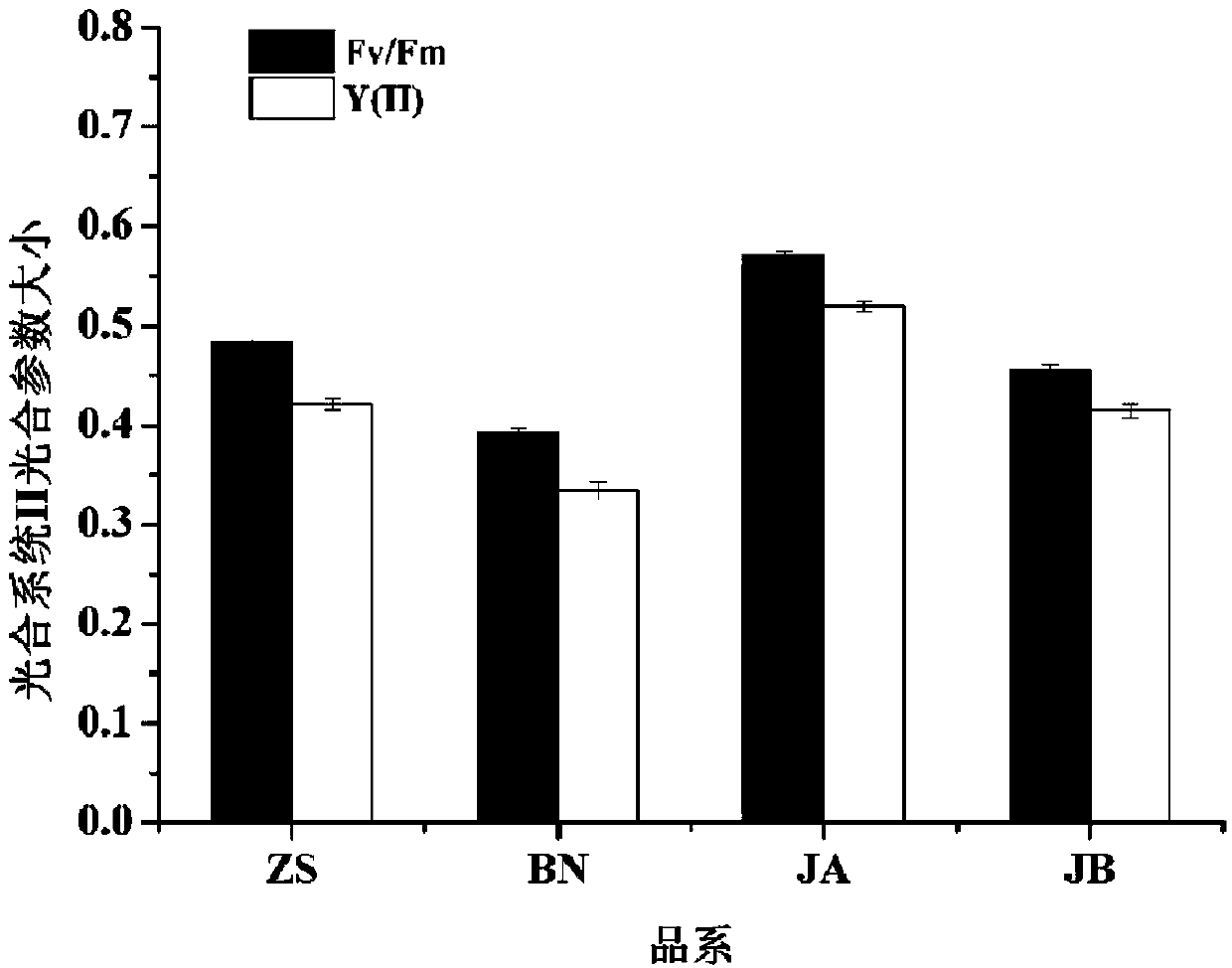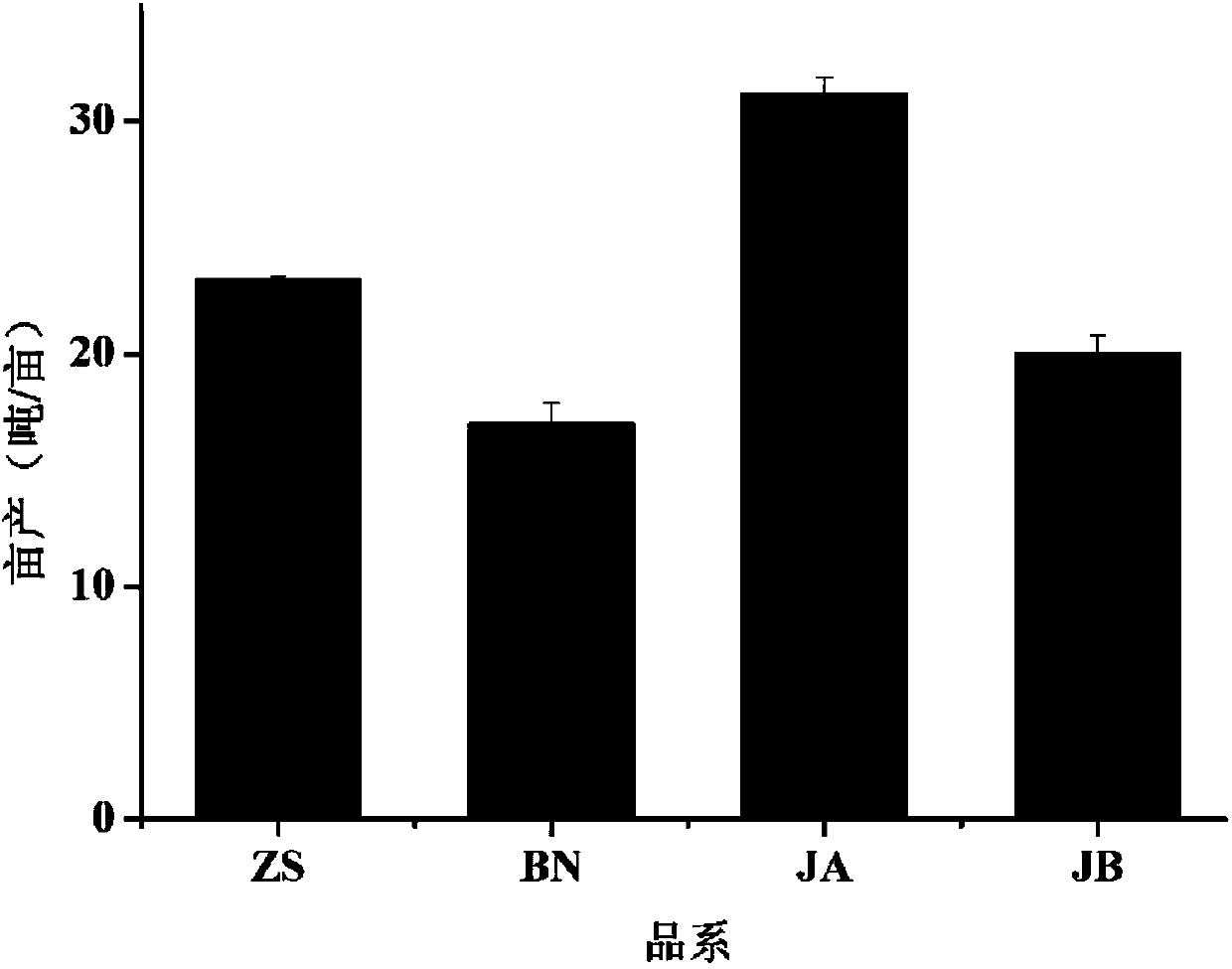Novel method for quickly screening high-yield kelp strains
A new method and technology of kelp, applied in the field of kelp seed breeding, can solve the problems of a lot of manpower, material resources, blindness and randomness of breeding results, long experimental period, etc. Effect
- Summary
- Abstract
- Description
- Claims
- Application Information
AI Technical Summary
Problems solved by technology
Method used
Image
Examples
Embodiment 1
[0026] A new method for rapid screening of high-yield Laminaria strains, which uses chlorophyll fluorescence technology to detect and compare the photosynthetic system parameters of different strains of Laminaria gametophyte photosynthetic system II,
[0027] 1) The different strains of kelp used in the experiment were collected from the kelp breeding area of Sanggou Bay, Rongcheng City, Shandong Province, and were labeled ZS, BN, JA and JB respectively.
[0028] 2) The composition and final concentration of the PES medium used in the experiment process are: sodium nitrate (NaNO 3 ) 46mg / L, glycerophosphate (C 3 h 7 Na 2 o 6 P·5H 2 O) 6.66mg / L, boric acid (H 3 BO 3 )3.8mg / L, 0.5M ethylenediaminetetraacetic acid (C 10 h 16 N 2 o 8 ) 18.2ml / L, Trismabase (C 4 h 11 NO 3 )66.6mg / L, ferric ammonium sulfate hexahydrate ((NH 4 ) 2 Fe(SO 4 ) 2 ·6H 2 O) 2.34mg / L, ferric chloride (FeCl 3 ) 100μg / L, manganese sulfate monohydrate (MnSO 4 ·H 2 O) 546μg / L, zinc sulfat...
Embodiment 2
[0034] Embodiment 2 zoospore breeding and sporophyte sea area cultivation:
[0035] The kelp sporophyte seedlings of different strains of Example 1 are cultivated by traditional zoospore breeding technology, and after reaching the specification of the seedlings out of the warehouse (about 2 cm in length), they are transferred to the kelp breeding area of Sanggou Bay, Rongcheng, Shandong Province in October, and are temporarily raised until one month later. , the seedlings were cultivated until harvesting in May of the following year, and the wet weight of kelp was detected monthly from January to May 2013. Maximum photosynthetic quantum yield F of Laminaria gametophytes of different strains v / F m and the actual quantum yield Y(II) as figure 1 shown. Such as figure 2 As shown, the wet weight of different strains of kelp increased significantly with the culture time (p image 3 As shown, as of May, the yields per mu of 4 different strains of ZS, BN, JA and JB were 23.168±...
PUM
 Login to View More
Login to View More Abstract
Description
Claims
Application Information
 Login to View More
Login to View More - R&D
- Intellectual Property
- Life Sciences
- Materials
- Tech Scout
- Unparalleled Data Quality
- Higher Quality Content
- 60% Fewer Hallucinations
Browse by: Latest US Patents, China's latest patents, Technical Efficacy Thesaurus, Application Domain, Technology Topic, Popular Technical Reports.
© 2025 PatSnap. All rights reserved.Legal|Privacy policy|Modern Slavery Act Transparency Statement|Sitemap|About US| Contact US: help@patsnap.com



